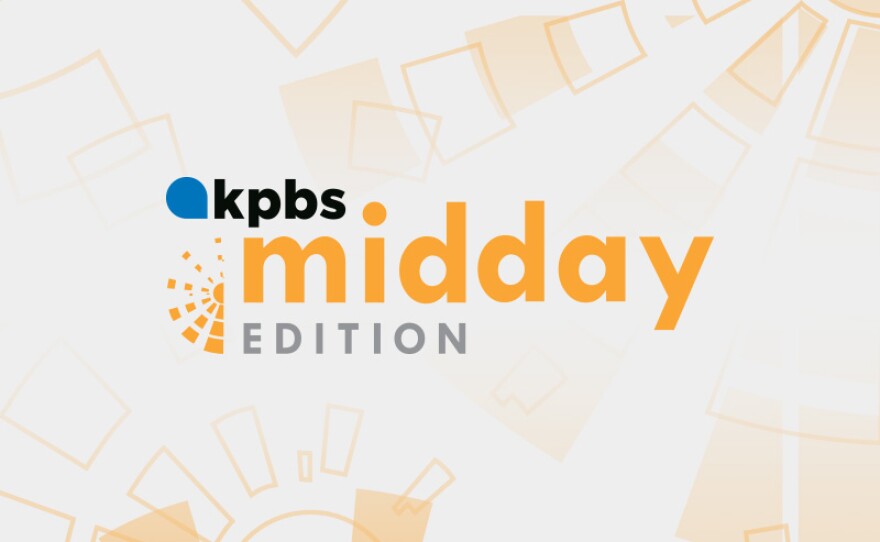Determined San Diego Women Fought For Right To Vote A Century Ago
Speaker 1: 00:00 The right to vote is something that many treasure, some take for granted and many more don't use. But how that vote came to be for women goes back more than a century in this country. As we celebrate the 100th anniversary of the 19th amendment KPBS as Maya troubles, he takes a look back at how San Diegans played apart Speaker 2: 00:19 Inside the women's museum of California in a room lined with clothes, buttons, postcards, and political signs, president of the museum. And Hoiberg reads from a poem written by a suffragist more than a century ago, Speaker 3: 00:37 Workday for the taxes we pay for the law's wheel Bay. We want something to say, Speaker 2: 00:46 But who were these trailblazers fighting for? Women's right to vote. And more specifically, how did San Diego play apart in 1895? Susan B. Anthony, the famous leader of the national suffrage movement paid a visit to the then sleepy town of San Diego. Speaker 3: 01:04 Yeah, the town was so excited. The famous Susan B. Anthony, she spoke at the Methodist church, standing room, only Speaker 2: 01:12 Determined that California women would get the right to vote in 1896. Anthony led the first local campaign. The amendment passed in San Diego, but for the state Speaker 3: 01:24 Down to failure, which was very disappointing Speaker 2: 01:28 At the time women were considered to be morally superior to men. And there was a fear of what steps they would take in society. Should they be able to vote particularly on the issue of prohibition women's suffrage could hurt the liquor industry. It wasn't for another 15 years in 1911, that women would seize another opportunity. This time led by a local point Loma resident, dr. Charlotte Baker, Speaker 3: 01:56 She would deliver a baby in the morning and then the afternoon she would dedicate to civic duties. And so she became president of the San Diego woman's suffrage association. Speaker 2: 02:08 Suffragists got organized with support from other prominent women like flora, Kimble of national city, Ellen Browning, Scripps, and attorney Clara Shortridge volts. The local suffragists used a three pronged strategy. They believed was short to work for starters, instead of protest, the women use the power of persuasion Speaker 3: 02:34 And these women would go into a man's home and they would sit with that man, and talk about the importance of women getting the right to vote and they wouldn't leave until they convinced you. And they even said they were conducting invasions invasions of men's home. Speaker 2: 02:54 The women took advantage of the times the California exposition was coming San Diego and Balbo park was having a groundbreaking ceremony in July of 1911 for their second strategy, the suffragists would parade. They decorated a float with yellow ribbon, promoting their clear message of equality. Speaker 3: 03:15 Yeah. They call it the modern Boston tea party flow and also had on their taxation without representation is cheering me now, as it was in 1770, Speaker 2: 03:32 For the most part, San Diego County was still a rural town. Agriculture was highly dependent on the labor of women. The just knew they had to reach the outlying communities by using their third strategy. Automobile campaigning. The campaign started on a Monday morning. Speaker 3: 03:51 Women left San Diego for ocean side. It probably took them several hours to get there. The roads were probably run a dusty dirty. What happened Speaker 2: 04:03 From there. They drove to speak to men in Escondido than to Fallbrook. And finally to Ramona, Speaker 3: 04:09 Imagine it took three days to cover our County and it was highly successful. And then I Tobar 11th occurred. And that was the big election day. Was it going to go down to defeat like it did an 1896 or would it be successful? Speaker 2: 04:29 It was a win. The final statewide vote was close with a margin less than one and a half percent in San Diego. The margin was wider with more than 57% of men voting yes. To grant women the right to vote. Speaker 3: 04:43 When you think of the determination of those suffragists, it just seems unbelievable that the numbers were higher, Speaker 2: 04:53 But the votes were high enough. And California became the sixth state in the country to give women the right to vote. All of which were Western States. Speaker 3: 05:02 How do you explain that? But I do think it has to do with the sense of equality between men and women, the pioneer spirit, the progressive newness of people who would venture from the East coast to come out here. To me, that's fascinating. Speaker 2: 05:21 Maya [inaudible] KPBS news. Speaker 3: 05:25 You can learn more about the suffrage movement and a new two part series on the American experience. It's called the vote and you can watch part two tonight at nine o'clock on KPBS TV and on the PBS video app.


